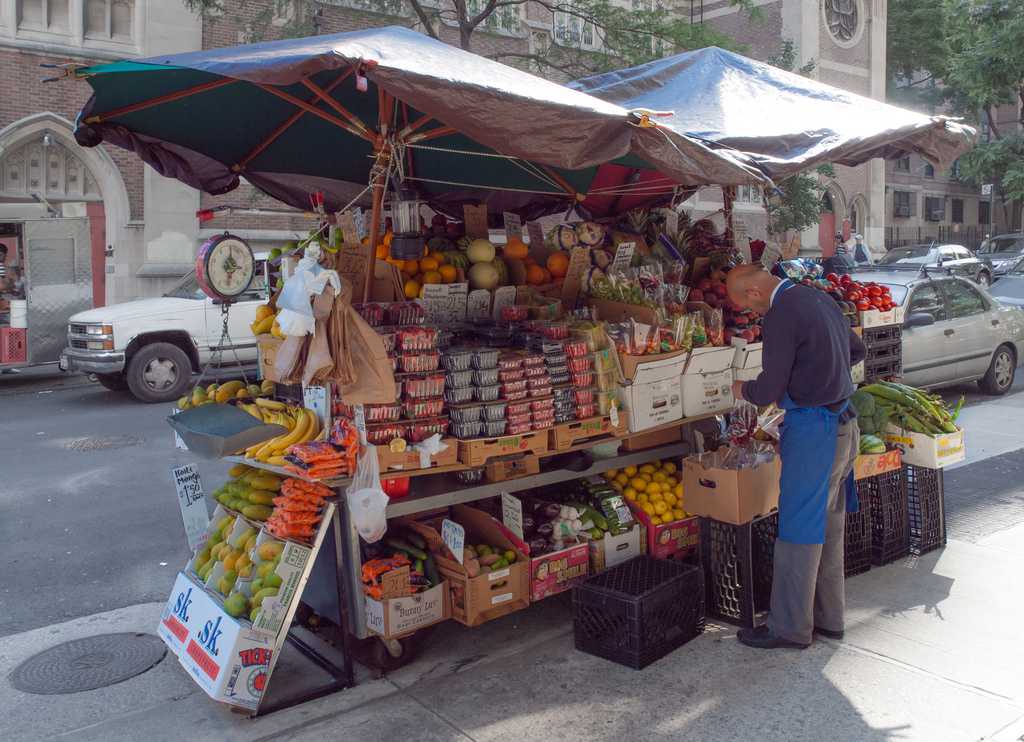EBT Cards Make Produce an Easy Choice
While expensive to acquire, green carts equipped with EBT machines lead to significantly higher sales. NYU researchers found that while expensive
October 6, 2017
According to a study conducted by NYU researchers, people who paid with their Electronic Benefit Transfer cards purchased more fruits and vegetables at NYC Green Carts.
NYC Green Carts are mobile fruit and vegetable carts that were created by the New York City Health Department when it identified several high needs areas where fruit and vegetable consumption was low, possibly due to limited access.
The study began in 2013, when the New York City Health Department was just starting to equip the Green Carts with technology that could accept EBT cards, which let people pay with Supplemental Nutrition Assistance Program Benefits, which is government assistance for purchasing food. It concluded that people who paid with EBT cards bought 5.4 more fruits and vegetables per transaction than those who paid with cash.
NYU Wagner doctoral candidate Andrew Breck was one of the researchers of the study, who worked with NYU professor Brian Elbel from Wagner, the senior investigator of the study.
“We were doing customer surveys at four of these Green Carts and all of the green carts that we were looking at were in the Bronx,” Breck said. “Between 2013 and 2014 we talked to almost 800 of these customers — 779.”
Courtney Abrams, a member of the research team and co-author of the paper, said that the data collection process was smooth.
“I think our data collectors enjoyed doing this work,” Abrams said. “The vendors and the customers were friendly and willing to help with the study. The customers received a single ride MetroCard as a thank you.”
Breck said that most of the Green Cart vendors were very appreciative of the EBT machines.
“[The vendors] were very enthusiastic about having the EBT machines,” Breck said. “They were convinced that EBT machines were worth the cost. Anecdotally I think having the machines there helped.”
However, Kamila Kiszko, a member of the research team and co-author of the paper, said that it was difficult for many vendors to obtain an EBT machine.
“We found that it is extremely hard for these vendors to actually get EBT machines, because they’re expensive, Kiszko said. “They actually have to get training to get them set up and to be able to use them, so it’s a great thing for them to have, but it’s not necessarily easy to have. We also found that a lot of them who we wanted to include in the study ended up not being eligible because of the difficulties of obtaining the EBT machines.”
Kiszko said that she encouraged NYU students who were interested in public health issues to go out into the field to work in the community.
“A lot of the people who have collected data for us in the past, a number of them have been students, and it was a very eye-opening experience for them to see how to make a small project happen that could potentially impact bigger policy in the future,” Kiszko said. “My biggest advice would be to go out in the field and see what it’s like working in that community, what it’s like talking to young people in the community and what it’s like gathering information and what their needs are and seeing how the information could potentially impact policy in the future.”
Email Herman Lee at [email protected].
























































































































































